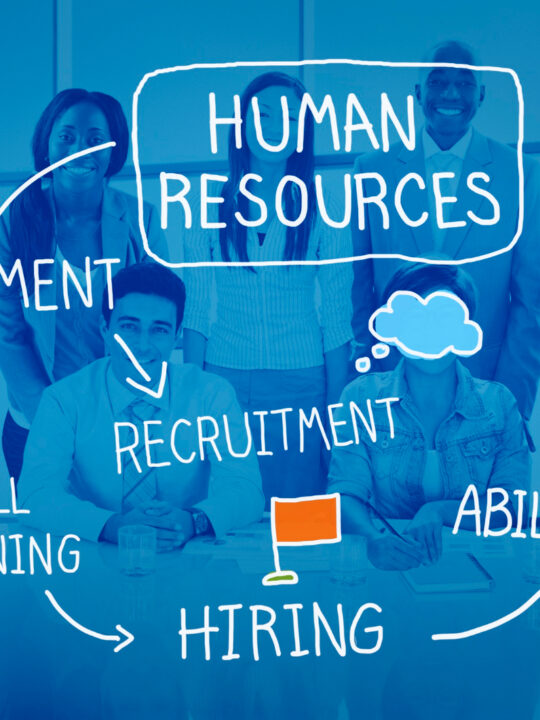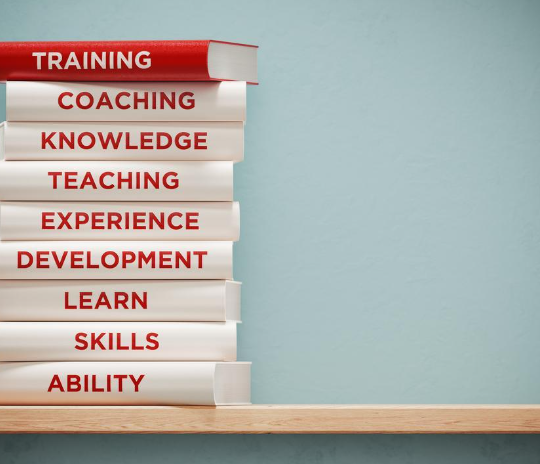Education enables unprecedented economic and social change when done right. And effective learning gives individuals the tools and confidence to enter specialized careers and excel at their jobs.
As with many other aspects of a progressive society, the higher education landscape has been radically impacted by the emergence of the digital age.
For years, the accustomed learning environments were bounded by the physical foundations of location. With the advancements in digitalization, learners can now access content and curriculum through the web, at a place and time convenient to them. It allows both the learners and instructors to interact asynchronously and synchronously across the globe.
Students can attain high-quality education, receive recognized and accredited qualifications. And this is of paramount importance for differently-abled learners, as the learning environment is likely to be tailored to their particular needs, specifically in terms of transport, assistive technologies, and physical access.
An all-inclusive learning opportunity for disabled learners is based on how e-learning platforms are designed. Their interface functionality and content type all impact the accessibility and ultimately the overall learning experience.
As a student, it’s imperative to bridge the gap between the eLearning platform’s accessibility and your educational objectives and build an actionable plan to achieve your milestones and targets.

Here is what accessible eLearning means and why it’s imperative to go for the institution that offers this learning experience.
Table of Contents
- 1 What Is Accessible eLearning And Why It Matters?
- 2 Provides A Worthwhile Experience To All Users
- 3 Fosters an Inclusive and Supportive Learning Environment
- 4 Best Practices For An Accessible eLearning Platform
- 5 Design With Visual And Audio In Mind
- 6 Include Captions In Images
- 7 Check Your Color Contrast And Use Similar Hues
- 8 Present Content In Different Ways
- 9 Keep The Navigation And Content Consistent
- 10 Develop Disability-Friendly Links
- 11 Wrapping Up
What Is Accessible eLearning And Why It Matters?
Accessible eLearning means that everybody, irrespective of their needs, is fully experiencing the educational opportunity. For example, suppose a person is partially sighted or visually impaired, and they wanted to avail themselves of an eLearning course. In that case, they should get a holistic experience like a fully sighted person.
Every student should be able to have an exceptional learning experience. This means ensuring that you consider accessibility while designing the overall eLearning structure.
Accessibility in online learning refers to making content, websites, platforms, and applications – usable to people of all disabilities and abilities.
According to the World Health Organization (WHO), over one billion people (15% of the world population) have some disability.
To put it simply, the probability of differently-abled learners in training groups is high, making it a challenge for learners and educators across the world. It’s a training professional’s responsibility to make sure that everyone experiences courses and programs engaging and positive. And the solution to this is accessible online courses Australia.
Accessible eLearning programs have many benefits for all learners. The significant part, though, is that this type of learning design is excellent for everyone. It makes the learning experience disability-friendly and opens up quite a lot of opportunities for disabled learners.
Here is why an accessible eLearning platform is important.
Provides A Worthwhile Experience To All Users
ELearning accessibility can benefit everybody, making it easier for differently-abled people to understand, perceive, interact, contribute and navigate your platform.
This might include people with outdated computer hardware, slow internet connectivity, an injury or some other physical condition, or somebody experiencing aging effects.
When it comes to eLearning, accessibility is quite valuable. Ensuring that your Learning Management System is within reach makes your training programs more effective at equipping the learners with adequate knowledge to perform optimally and capably in their jobs.
Fosters an Inclusive and Supportive Learning Environment
Disability is common and is prevalent: according to the NCCD, every one in five students (19.9%) in Australia gets an adjustment because of disability issues.
It’s apparent that an inclusive and supportive learning environment is imperative for students with any disability and should be a priority for all educators across Australia.
Disabilities can be auditory, visual, physical, cognitive, speech-related, neurological, or learning.
It’s relatively easy to envision how some disabilities impact accessibility. For instance, someone with a visual impairment will require a screen reader to properly “read” the document or interface — some are less noticeable but still need accommodation.
Best Practices For An Accessible eLearning Platform
Without a doubt, eLearning is a useful tool for educating learners. Accessibility is a fundamental component of a value-driven eLearning experience. And it can’t be overlooked.
While you can follow numerous best practices to enhance accessibility, the best way to ensure your eLearning platform’s effectiveness is to take feedback from users. Ask them to pinpoint obstacles they’re facing, acknowledge their pain points, and work to alleviate them. This is what can help you make an accessible eLearning platform.
Here are some of the best practices to ensure a holistic experience for all learners alike.
Design With Visual And Audio In Mind
If you include audio or a video, make sure that it comprises an intro that familiarizes the learners with the content and tells them how to interact with it.
Several reasons contribute to why a learner may prefer a visual or an audio version of the course. Therefore, it is vital to make sure that all your audio content is available as text, either via closed captions or transcript, to assist those who are hard of hearing.
Furthermore, captions should be easy-to-read font and stay for long enough for the recipient to read them. Also, there should be a pause option for learners who wish to read and comprehend the captions at their own pace.
Similarly, if you provide a transcription, it should have an understandable and organized font so that the reader can quickly grasp and keep up with the course instructor’s pace.
Leverage assistive technologies such as a screen reader to make your content compatible. You can do this by:
- Providing a transcript
- Adding captions
- Choosing an appropriate language
All in all, you need to ensure that your multimedia content has subtitles. That way, individuals with hearing or visual disabilities can enjoy an equally practical experience.
Include Captions In Images
Suppose your images consist of crucial information that you want all the learners to grasp and understand. In that case, it is essential to add captions to all the necessary photos. Also, make sure you include the alt text or text alternative to elucidate what the picture is trying to demonstrate.
This may be optional for some images, such as supporting visuals that are not vital for understanding the content.
Check Your Color Contrast And Use Similar Hues
Contrast is a cornerstone when it comes to text readability. Ensure a high color contrast, either by using wildly different colors or very different tones. To improve legibility, consider boosting the text size too.
If you’re positioning the text on a background image, utilize a color tint to maintain the clarity of the text and keep it as legible as possible. The sufficient color contrast makes any text far better and easier to read for people, especially those who are color blind or partially sighted.
A well-designed table or graph with an assortment of different colors may look visually appealing, but that makes it difficult for people to interpret factual information. Instead, try to use multiple shades of the same type – it increases accessibility and makes it look better.
Present Content In Different Ways
Offering your content in multiple communication channels and formats makes your courses flexible for diverse students. Here are some of the examples.
- If you conduct live webinars, you can use Adobe Connect tools and ensure that the same webinars are available on your LMS’s discussion forum where learners who are deaf or hard of hearing can use the text to interact and engage.
- Ensure that all the learners can easily reach out to the course instructors and technical support for help. For example, offer an email address, instant messaging option, and phone number for contacting support.
- Use ‘Alt tags’ or text alternatives for images for clear image depiction.
- Videos along with captions to describe the audio track
- A text transcript with the audio
- Visual multimedia and video content like infographics, animations, and GIFs should have a description.
All users/learners cope with a learning curve when leveraging a user interface. Ensuring consistency in how content and navigation are displayed and organized helps reduce the learning curve and enhances accessibility for everyone alike.
Create a first-visit brief tour or a welcome course that acclimatizes new learners to the primary tools and navigation on your platforms.
Develop Disability-Friendly Links
For any course content, hyperlinks are inevitable. They give learners the options to further explore ideas and concepts and get access to necessary course material. But it should be easy to read and navigate through, too.
You can do this by:
- Making your links as illustrative as possible. For instance, rather than “click here,” hyperlink that text that describes what that specific link will lead to
- Build longer links through hyperlinking as a minimum of two full words. This allows the learners with motor skills challenges to easily click on links.
Wrapping Up
Accessible eLearning ensures that you have a great and valuable learning experience, which will naturally boost your overall understanding and performance in your potential career fields.
Technology has enabled the learners to get more engaging and interactive when it comes to online learning courses. Additionally, it has widened the gap between the learning experiences of those with and without disabilities.
Institutions like MCI can provide you with relevant, innovative, and practical e-learning material and keeps accessibility and convenience at the heart of it. They can develop a content format that can cater to all of your requirements.
At MCI, the online certificate courses make e-learning an enjoyable and holistic experience for all learners alike. Visit the website to learn more.







